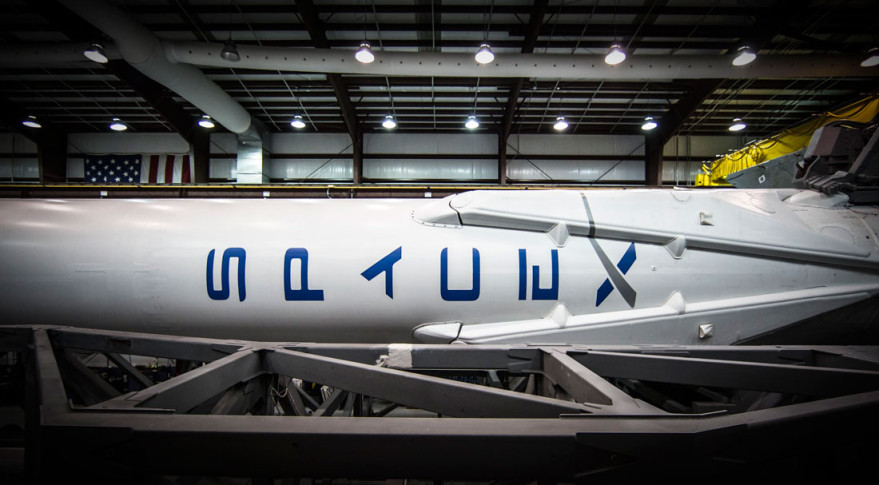SpaceX Changes Its Falcon 9 Rocket Return-to-Flight Plans

JERUSALEM – SpaceX on Oct. 16 said it had changed its Falcon 9 return-to-flight plans and would first launch 11 small Orbcomm messaging satellites into low Earth orbit, and then test reignition of the rocket's redesigned second-stage engine during the same flight before launching SES's heavier telecommunications satellite into higher orbit, a mission that will need the reignition capability.
Luxembourg-based SES said the company was comfortable with ceding its slot to Rochelle Park, New Jersey-based Orbcomm, especially since SpaceX has said it can launch the SES-9 telecommunications satellite into geostationary orbit in late December.
Hawthorne, California-based SpaceX said the Orbcomm launch would occur by mid-December, meaning the company will proceed with full development of at least two Falcon 9 Upgrade vehicles and launch SES within a couple of weeks of the Orbcomm mission.
SES-9 is a high priority at SES. The delay in the launch — it was supposed to occur by September at the latest —is one reason why SES has trimmed its 2016 revenue projections.
SES spokesman Markus Payer said Oct. 16 that while the company wanted SES-9 in service as soon as possible, it was not inclined to disagree with SpaceX about the risk profile of the return to flight and the advisability of a real-world test of the second-stage engine's reignition.
"At the end of the day, if the launch provider tells you this is the way they would prefer to proceed, then we take that seriously," Payer said. "We are working toward a late-December launch."
SpaceX is returning to flight after a June failure not with the same rocket that failed, but a modified version known variously as Falcon 9 Upgrade and Falcon 9 v1.2. The main purpose of the upgrade is to give Falcon 9 about 30 percent more power. It can then use the extra muscle to return the rocket's first stage to a landing platform even after missions to geostationary orbit.
Get the Space.com Newsletter
Breaking space news, the latest updates on rocket launches, skywatching events and more!
The Falcon v1.1, which will be used only once more, for a low-orbit mission for NASA, does not have sufficient power to perform ageostationary transfer orbit mission and a return of the rocket's first stage, a maneuver that consumes substantial fuel on its own.
In a statement, Orbcomm Chief Executive Marc Eisenberg said, "We are excited to launch our 11 OG2 [Orbcomm second generation] satellites aboard SpaceX's newly upgraded Falcon 9 rocket and have full confidence in SpaceX and their dedication to this launch."
The Falcon 9 Upgrade features changes throughout the vehicle with the exception of the payload fairing. On the second stage, the enhancements include increased engine thrust, a longer nozzle and a longer second stage overall.
The decision to switch customers suggests that beneath the confidence routinely demonstrated by SpaceX officials lies a prudence that may have been enhanced by the June failure. SpaceX and SES have known for many months about the upgraded vehicle's novelties and test campaign.
SpaceX issued the following statement explaining its decision.
"As we prepare for return to flight, SpaceX together with its customers SES and Orbcomm have evaluated opportunities to optimize the readiness of the upcoming Falcon 9 return-to-flight mission. All parties have mutually agreed that SpaceX will now fly the Orbcomm-2 mission on the return-to-flight Falcon 9 vehicle.
This story was provided by SpaceNews, dedicated to covering all aspects of the space industry.
Join our Space Forums to keep talking space on the latest missions, night sky and more! And if you have a news tip, correction or comment, let us know at: community@space.com.
Peter B. de Selding is the co-founder and chief editor of SpaceIntelReport.com, a website dedicated to the latest space industry news and developments that launched in 2017. Prior to founding SpaceIntelReport, Peter spent 26 years as the Paris bureau chief for SpaceNews, an industry publication. At SpaceNews, Peter covered the commercial satellite, launch and international space market. He continues that work at SpaceIntelReport. You can follow Peter's latest project on Twitter at @pbdes.











